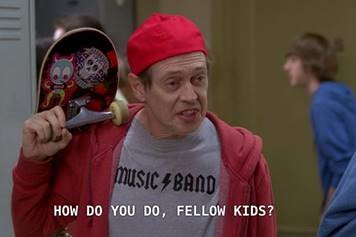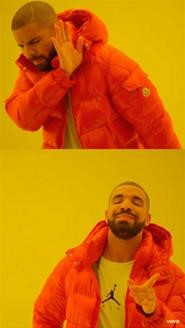Memes are one of the internet’s common languages but remain an area in which brands struggle. They require relinquishing control and not taking the brand too seriously, to be self-deprecating. UM London’s Luke Randall considers the meme.
Younger people have a strained, at best, relationship with the traditional media. The latest UK by UM study revealed that just a fifth feel they are represented authentically by TV and less than a tenth by newspapers.
So instead, young people have looked to online media to find their place. That means meme-driven sites such as Buzzfeed as well as platforms like Instagram and WhatsApp. Advertising on those sites is not always easy, or possible, but meme-sharing is ubiquitous there. That could be brands’ foot in the door, but only if marketers learn this new, messy and very different language.
In awe at the size of this lad. Absolute unit.
Memes are a way for brands to keep up with the cultural conversation and look human, not like faceless corporate monoliths. For a youth audience that values authenticity so highly, they offer a way for brands to tap in to specific social – and sharable – moments.
But there is a fine line between what’s genuine and off-the-cuff and looking like you’re trying too hard to crowbar yourself into a conversation. You have to earn the right, and if you haven’t it can backfire. KFC tweeted the reclining Jacob Rees-Mogg meme, the Conservatives tried to respond with a Jeremy Corbyn attack and KFC (among others) clapped back hard.
This is an example of the good and the bad in a single exchange and it highlights that you can’t use memes to control a message the way most corporate brands want to. You have to be willing to be self-deprecating and can’t use them for anything ‘serious’. Mostly.
Right off the bat, that means a lot of brands need to realise memes are not right for them, no matter what their 27-year-old social media manager (or worse, their fifty-something CEO who’s desperate to seem ‘with it’) says.


The most ambitious crossover event in history
Brands need a solid foundation before you can start dropping memes into their social conversations. They also have to understand that this isn’t really a one-shot deal. Slipping a single sassy meme into a Twitter stream that’s otherwise full of corporate messaging seems disingenuous, unless the marketing team is prepared to back it up with more of the same.
And yes, it’s a risky strategy given no-one wants to be accused of bandwagon jumping, or – horror of horrors – to become the butt of the joke. But a number of brands are using memes effectively, whether creating their own or adapting existing ones: M&M’s riffing on Game of Thrones, KFC of course and Netflix.
It’s worth thinking of memes as any other media channel. Cinema ads aren’t the right fit for every brand, for example, so those brands just don’t advertise that way.

Success baby
It’s also possible that memes are the territory of challenger brands. In many cases, it’s the ‘upstart’ brand that is more willing to take risks, go for quick wins and be less corporate in its approach. Where fast food chains like KFC and Wendy’s in the US are meme-heavy, it’s hard to see McDonald’s trying the same approach successfully.
Memes aren’t just a way for FMCG and fast-food brands to target younger consumers, however. Any brand that wants to reach its audience – and have them reach back – can potentially take advantage. It’s a question of risk and reward. A traditional financial services brand terrified of risk probably won’t take this approach, but an internet-based start-up in the same sector might be willing to try.
Just remember – memes are, by their very nature, out of control and messy. A brand that doesn’t want to see itself shared and mocked in the darkest corners of the internet may want to look elsewhere. But those that don’t mind, and want to be sure that people see the human face behind the corporate façade, could reap significant rewards.
Wow. Very right. Many shares. Such reward.

